Some NFL teams draft for need, and some draft strictly with an eye on talent. Either way, most teams still have weaknesses on the roster after the draft is over.
Below, Football Outsiders looks at the biggest hole on each roster following the 2019 NFL draft. Many of the advanced stats referenced below are explained here.
NFC East
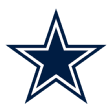
Dallas Cowboys: Safety
The weak link on Dallas' defense last season was the secondary, especially at safety. Jeff Heath allowed the second-most broken tackles a year ago and isn't much better at coverage. The Cowboys added George Iloka on a one-year deal, but he's a stopgap solution at best. They missed out on long-rumored crush Earl Thomas, as well as Landon Collins, Tyrann Mathieu and the rest of a robust free-agent market.
It seemed like a near-guarantee Dallas would use a pick in this deep safety class to improve the position, adding either a thumper in the box to replace Heath, or a safety with range to allow Xavier Woods to play closer to the line. The Cowboys did add Texas A&M's Donovan Wilson late in the sixth round, but he's more likely a special-teams prospect at best, and isn't guaranteed to even make the 53-man roster. They seemed to actively avoid the position for much of the draft; top prospects Nasir Adderley, Taylor Rapp and Juan Thornhill all came off the board within five slots of Dallas' first pick, defensive tackle Trysten Hill. Dallas will be counting on Woods' continued development and hoping either Heath or Iloka perform better than they did in 2018 as the Cowboys try to defend their NFC East title.
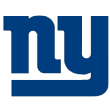
New York Giants: Right tackle
The Giants finally made a move to replace Eli Manning, taking Daniel Jones with the sixth pick of the draft. GM Dave Gettleman's choice was widely criticized by many pundits, but let's assume, for the moment, that New York's scouting correctly identified Jones as a better prospect than Dwayne Haskins, Drew Lock and the rest of the 2019 class. Their next goal has to be keeping Jones upright.
The Giants ranked 20th in adjusted sack rate a season ago, as well as 29th in adjusted line yards -- they could neither protect the quarterback nor open holes for Saquon Barkley. The addition of Kevin Zeitler should help shore up the interior of the line, but right tackle Chad Wheeler was a liability in every aspect of the game. New York did add Kentucky's George Asafo-Adjei in the seventh round, but he's nowhere near ready to be a Day 1 starter. Jones will have to keep his head on a swivel when he enters the Giants' lineup.
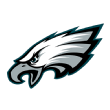
Philadelphia Eagles: Guard
The Eagles used their top pick on an offensive lineman, Washington State's Andre Dillard. Dillard was a great value pick at No. 22 and projects as a potential replacement for Jason Peters, but he's unlikely to help much in 2019. Between Peters and Lane Johnson, the Eagles are set at tackle for the short-term future; instead, it's the interior of the line that has question marks.
The Eagles let Stefen Wisniewski leave in free agency, and Brandon Brooks is still recovering from an Achilles tendon injury, leaving the Eagles very thin at guard. Isaac Seumalo would be better suited as a versatile backup rather than the every-day starter at left guard, and Matt Pryor has never played in a regular-season game. If Brooks isn't ready to go by the start of the season, and if Seumalo's struggles from early last season rear their heads again, Philadelphia will find itself regretting not adding more talent to the interior line during the draft.

Washington Redskins: Safety
Washington did a tremendous job of fitting picks to their top needs. Dwayne Haskins fell into their lap at No. 15, and they managed to add talent at wideout and the interior offensive line before the fourth round was over. They even found room to add the falling Montez Sweat to boost their pass rush. Still, with as many needs as Washington had, it couldn't cover everything.
Adding Landon Collins was a huge boost for Washington's secondary, more than filling the hole left by the cut D.J. Swearinger. The problem is, Washington needed two new starting safeties, as Ha Ha Clinton-Dix left in free agency. The current penciled-in starter would likely be Montae Nicholson, who was benched early in the year for poor play, and suspended late in the year for off-field trouble. There aren't a lot of options behind him; Deshazor Everett and Troy Apke are better suited for depth roles. Washington will likely be stuck hoping Nicholson can return to the form he flashed as a rookie in 2017 and can stay out of trouble off the field.
-- Bryan Knowles
NFC North
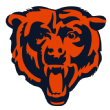
Chicago Bears: Defensive front depth
Khalil Mack, Leonard Floyd, Akiem Hicks and Eddie Goldman: That's about as strong a defensive core as any team can ask for. This is a versatile, overwhelming group that propelled the Bears to rank ninth in adjusted line yards allowed last season. They also ranked third in the league with 50 sacks. Depth, however, is a concern. Aaron Lynch, Isaiah Irving and Kylie Fitts present an unsettling fallback plan in the event of injury to either Mack or Floyd. Likewise, rotational interior defensive linemen Jonathan Bullard and Roy Robertson-Harris are both in contract years and need to step up their level of play to prove the Bears should not replace them in 2020.
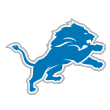
Detroit Lions: Right guard
The deterioration of T.J. Lang's health midway through last season thrust Kenny Wiggins into the starting lineup in his place. Lang was intended to solve Detroit's recurring issue of poor guard play, but with him not being able to stay on the field due to concussions and neck issues, the Lions were back to square one. Wiggins, who had formerly spent five years with the Chargers, including one as a starter, did not impress in the back half of last season. Though Lang was not the force he was in Green Bay, Wiggins still failed to clear the middling bar Lang had set for the Lions' right guard spot that year. After having not addressed offensive line at all in the draft, Detroit is willingly opting into below-average play at the position for 2019.
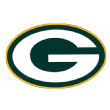
Green Bay Packers: Pass-catcher
It is tough to fault the Packers for doubling down on defense with Rashan Gary and Darnell Savage Jr. in the first round. After bringing in an offense-minded head coach in Matt LaFleur, the belief may be that LaFleur can do a better job of maximizing the current offensive talent than Mike McCarthy did.
Still, the sacrifice of investing so heavily in defense is that the Packers did not draft a pass-catcher until the third round, when they took tight end Jace Sternberger. Considering many tight ends struggle to contribute much right out of the gate, Sternberger likely does not move the needle for the offense in 2019. Jimmy Graham, who disappointed last year, will still be the primary tight end. Furthermore, Green Bay did not invest at all at wide receiver despite losing Randall Cobb. Aside from Pro Bowler Davante Adams, the Packers' wide receiver corps is thin and inexperienced.

Minnesota Vikings: Wide receiver
Similar to the Bears' defensive front, the top of the Vikings' wide receiver depth chart is impressive. Stefon Diggs and Adam Thielen are arguably the best, most versatile duo in the league. Either one could be a regular All-Pro selection if they were not eating at each other's production. The group behind those two, however, leaves more to be desired.
In declining Laquon Treadwell's fifth-year option last week, the Vikings have declared their disinterest in seeing through on his potential. Treadwell has just 517 yards and one touchdown in three seasons in the league, never topping more than 35 receptions in a season. Minnesota also made a late-round draft effort to bring in new receiver talent with Dillon Mitchell and Olabisi Johnson in the seventh round, but to expect either of them to be reliable contributors this season would be overzealous. It would not be surprising to see the Vikings favor two-tight-end sets with veteran Kyle Rudolph and rookie Irv Smith Jr. to offset the issue of receiver depth.
-- Derrik Klassen
NFC South
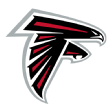
Atlanta Falcons: Cornerback
The Falcons came into the offseason with two major goals: plug glaring holes in the defensive front seven and rebuild their offensive line. Veteran free agent Tyeler Davison and the returning Adrian Clayborn help immensely with the first of those, whereas the team spent massive amounts of draft capital on the second. That leaves cornerback as the most obvious area of uncertainty: Isaiah Oliver made only two starts in his rookie season but is now first in line to start opposite Desmond Trufant. The vital nickelback spot is a contest between a recently converted safety (Damontae Kazee), a career backup with one start in three years (Blidi Wreh-Wilson), and two developmental late-round rookies in Kendall Sheffield and Jordan Miller. Even if one of those players develops quickly into a worthy starter, depth in the secondary remains a clear issue. Atlanta only needs to look back a single season to see just how important that can be.
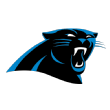
Carolina Panthers: Safety
Top draft pick Brian Burns filled Carolina's most glaring need (edge rusher), and second-round pick Greg Little filled their second-most glaring -- indeed, the need at left tackle might now be truly filled for the first time since Jordan Gross retired five years ago. That probably leaves the secondary, once again, as the top area of concern for Panthers fans. Ron Rivera has made a career out of covering for a middling secondary with an exceptional front seven, and this cornerback group does have plenty of promise, but the Panthers would probably benefit from a superior second safety to pair with the excellent Eric Reid. Right now, the projected starter is 2018 third-rounder Rashaan Gaulden, who as a rookie didn't play at least 50 percent of snaps in a game until Week 17.
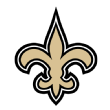
New Orleans Saints: Wide receiver
There is not much to dislike about arguably the strongest starting lineup in the league, and the Saints are one of the offseason favorites to win the NFC. To make that a reality, they probably will need to get more from a receiving corps that, top target Michael Thomas aside, struggled to make an impact in 2018. Veterans Ted Ginn Jr. and Cameron Meredith spent more time on the treatment table than on the field, elevating Tre'Quan Smith and Keith Kirkwood into roles for which they were not quite ready. Another year of experience should benefit Smith, and the addition of a tight end who must be respected as a playmaking threat (Jared Cook) should help, but Ginn is not getting any younger and neither is his quarterback. A Dez Bryant-style signing has been floated as a possibility, though signing Bryant did not exactly work out last year. Failing that, somebody needs to emerge from the communion behind Thomas to take some of the pressure off of Drew Brees' primary target.
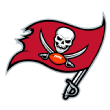
Tampa Bay Buccaneers: Defensive line
Since the moment he cleared out his locker for 2018, rumors out of Tampa Bay have suggested that Buccaneers stalwart and franchise legend Gerald McCoy will be playing elsewhere by Week 1 of 2019. That move has not yet happened, but the new coaching staff has been, at best, lukewarm at the prospect of retaining arguably the greatest active veteran never to have appeared in a playoff game. Even with McCoy, the Buccaneers' defensive line rotation is shallow; most of the team's 4-3 defensive linemen project better as stand-up edge rushers in a Todd Bowles defense. A prospective McCoy departure would leave a gaping hole at the heart of the defense; the Buccaneers should probably still be looking to add beef up front rather than to offload their one true standout interior defensive lineman.
-- Andrew Potter
NFC West
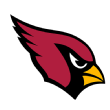
Arizona Cardinals: Offensive line
It's a funny thing about the NFC West -- largely, the biggest holes we identified for each team going into the offseason remain unfilled even after the draft. In February, we wrote about how the Cardinals' offensive line was ravaged by injuries last year, with every starter on IR or cut by the first week of December. Arizona's solution to this problem was to trade for Pittsburgh's Marcus Gilbert (who missed 11 games last year and nine in 2017) and sign J.R. Sweezy (who missed all of 2016 with a back injury and couldn't stick with Tampa Bay or Seattle since then) in free agency. That duo will start along with D.J. Humphries and right guard Justin Pugh, who have each missed more than 20 games over the past three years, and A.Q. Shipley, who will turn 33 this month and coming off a torn ACL. The draft produced little help save for a pair of late-round fliers. Kyler Murray may soon face the same pressure that pushed Josh Rosen out of Arizona.
Domonique Foxworth explains why GM Steve Keim is undermining Kliff Kingsbury's authority by saying Kyler Murray will be the Cardinals' starter.

Los Angeles Rams: Edge rusher
The Rams were paper-thin on the defensive perimeter coming out of the Super Bowl and failed to add a pure edge rusher in either free agency or the draft. That sentence does come with an asterisk; the Rams signed veteran linebacker Clay Matthews away from Green Bay, and Matthews has split time between edge rusher and inside linebacker over his career. He will be 33 this season, however, and had only 3.5 sacks in 16 games last season. Mind you, that's still more than either of L.A.'s returning edge rushers, Samson Ebukam (3.0) and Dante Fowler Jr. (2.0). Fowler remains an enigma; he has only 16.0 sacks since Jacksonville drafted him third overall in 2015, but he added 1.5 in the playoffs last year, and he doesn't turn 25 until August. The Rams re-signed him to a one-year, $14 million prove-it deal. Ebukam, who has only 5.0 sacks in 32 NFL games, will be out until training camp following knee surgery.
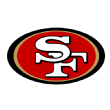
San Francisco 49ers: Secondary
When we listed the secondary as San Francisco's biggest hole in February, we got feedback from 49ers faithful who insisted that, no, the team needed pass-rushers more than anything else. Well, after the big-ticket acquisitions of free agent Dee Ford and second overall draft pick Nick Bosa, the pass rush ain't a problem no more, but we're still left wondering what's going to happen when opposing quarterbacks don't hit the turf. The 49ers have added only two defensive backs since the season ended, a pair of corners: free-agent signee Jason Verrett, who has missed 39 of 64 games since the Chargers took him in the first round in 2014, and Tim Harris, a sixth-round rookie out of Virginia who was the 24th corner off the board. It could be another long year for Ahkello Witherspoon and K'Waun Williams, and a real catastrophe if Richard Sherman's play starts to slip at age 31.
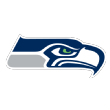
Seattle Seahawks: Defensive line
This was Seattle's biggest hole even before Frank Clark was traded to Kansas City; after the deal, it wasn't just a hole, it was a chasm, a crevice, an abyss, maybe the biggest weakness on any of last year's playoff teams. First-round draftee L.J. Collier will help somewhat, but he still needs development -- he never had more than six sacks in a season at TCU. It's not clear who will line up on the other side, but the quartet of candidates on hand -- Quinton Jefferson, Rasheem Green, Branden Jackson and Cassius Marsh -- have a total of only 18.0 career sacks between them, and never more than the 5.5 Marsh had last year with San Francisco. Detroit free agent Ezekiel Ansah visited Seattle in April but left without a contract.
It's also a mystery who's going to line up next to Jarran Reed inside. With Shamar Stephen returning to Minnesota in free agency, the Seahawks will have to get by with the trio of Nazair Jones, Poona Ford and Jamie Meder, formerly of the Browns.
-- Vincent Verhei
AFC East
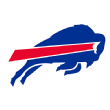
Buffalo Bills: Wide receiver
The Bills did a lot of hole-filling in the draft, but still have only John Brown, Cole Beasley and Robert Foster in their projected three-wideout sets. It's a recipe that is going to make the offense extremely boom-or-bust, because Josh Allen's arm can hit deep throws, but his underneath targets are Beasley and Tyler Kroft, and his completion rate underneath is going to make sustaining drives difficult. Allen had one of the two lowest expected completion percentages per NFL Next Gen Stats data in 2018 -- and nothing the Bills have done is going to make the relative difficulty of his throws any easier for him in 2019.
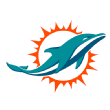
Miami Dolphins: Edge rusher
Miami's trade for Josh Rosen is, at worst, a credible stab at establishing itself as a team with a franchise quarterback. That's a huge win for them considering how long they wandered the Tanneverse. However, after letting Cameron Wake walk, they don't have much in the way of pass rush. Charles Harris might be able to rebound from a down 2018, but Tank Carradine and Jonathan Woodard aren't going to get this team 15 sacks next season. They might not even get 10.
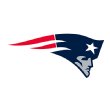
New England Patriots: Tight end
Patriots fans have got to be hoping that Rob Gronkowski will do an about-face on his retirement as we get closer to the season, because this current group is lacking. Nominally led by expert-at-losing-touchdowns-to-instant-replay Austin Seferian-Jenkins, the Patriots also have Matt LaCosse, Stephen Anderson and Ryan Izzo. It's a group that is not likely to make life at the goal line any easier for the Pats. Seferian-Jenkins had a minus-25.9% DVOA last year en route to losing playing time to James O'Shaughnessy. Come back, Gronk!
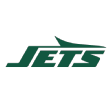
New York Jets: Edge rusher
One of the biggest upsets of the offseason is that the Jets managed to come up empty in a free-agency period rife with edge rushers such as DeMarcus Lawrence, Jadeveon Clowney, Trey Flowers and more. After picking Quinnen Williams over Josh Allen, the Jets remained extremely on-brand by drafting only one edge player: Jachai Polite of Florida in the third round. Polite had the lowest SackSEER rating (our college pass-rusher projection system) of any player pegged to be picked in the first two rounds. We may all be cold in the ground before the Jets have a good edge rush.
-- Rivers McCown
AFC North
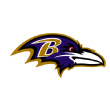
Baltimore Ravens: Edge rusher
After letting Terrell Suggs and Za'Darius Smith walk in free agency, the Ravens could only walk away with one stab at the edge-rusher apple in the draft: Jaylon Ferguson. Ferguson is the career leader in FBS sacks, but fell to the third round on subpar measurables, so he's kind of an eye-of-the-beholder prospect. Matthew Judon has never really been a first-tier edge rusher and the backups at the position are Tim Williams and Tyus Bowser, neither of whom inspire confidence. Maybe the Ravens can piece together a strong pass rush from this group, but they're banking on a lot to go right.
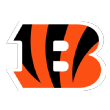
Cincinnati Bengals: Linebacker
Nick Vigil had a promising start to his career but hasn't been healthy and hasn't been good enough to warrant a huge financial commitment yet. With Vontaze Burfict mercifully released, the team has nothing but stopgaps and low-round picks at the position. Preston Brown is a stopgap solution, while Hardy Nickerson Jr. and Jordan Evans didn't play well at all in 2018. Maybe Malik Jefferson, a 2018 third-rounder, gets out of the rookie growth box the Bengals seem to put most of their picks in. But you can argue that the Bengals shouldn't expect a single member of this unit to play well in 2019.
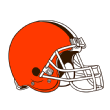
Cleveland Browns: Offensive line
The Browns didn't spend a single pick outside at tackle even though Greg Robinson, Desmond Harrison and Chris Hubbard didn't have great seasons in 2018. Robinson had enough of a second half to get the Browns to give him a full-time shot, but they're hardly locked into him as a long-term solution. Moreover, the trade of Kevin Zeitler to the Giants has now forced Austin Corbett into a starting spot, and he is a question mark. It's hard to find a lot of holes on the rebuilt Browns, but they may be asking Baker Mayfield to make a lot of plays after avoiding an initial pass-rusher.
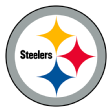
Pittsburgh Steelers: Wide receiver
The Steelers have effectively managed the downside of Ben Roethlisberger's career by having enough great receivers to make life easy for him. With Antonio Brown gone, we're no longer sure that will be the case. They do have options outside of JuJu Smith-Schuster, but none of the options are proven. James Washington's first year produced a minus-25.1% DVOA even with Brown and Smith-Schuster as cover, and Ryan Switzer was at minus-11.1% DVOA despite an 82 percent catch rate. Third-round pick Diontae Johnson is a credible stab at solving the situation -- he's explosive -- and the Steelers have shown incredible skill when drafting wideouts later in the draft. But still, they're going to need someone to show that skill off instantly.
-- Rivers McCown
AFC South
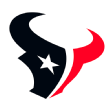
Houston Texans: Running back
The Texans did select a back to add to a collection that includes Lamar Miller, D'Onta Foreman further removed from his Achilles tendon injury, and not much else. But that didn't happen until the seventh round, and the player they chose was a fullback, Texas A&M's Cullen Gillaspia. Using their early picks to address the offensive line and cornerback were good selections at areas of greater need. Third-round pick Kahale Warring might be an upgrade on the tight end group, but seems like an indulgence at a position where Houston already had plenty of depth.
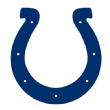
Indianapolis Colts: Impact defensive players
Chris Ballard had a clear plan for the draft, focusing on the back seven of a defense that was surprisingly improved to above average last year. Second-round pick Parris Campbell also addresses wide receiver, the offense's weakest position. Will that be enough? Indianapolis' defensive performance might have been built on the league's easiest slate of opposing offenses, with 12 of their 16 regular-season games coming against teams in the bottom dozen in offensive efficiency. The addition of Justin Houston gives Jabaal Sheard a complement at defensive end, but taking a medical risk on Montez Sweat, whom we projected as a high-quality prospect, might have been a better option than trading down into the second round, even for a second-round pick next year.
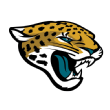
Jacksonville Jaguars: Tight end
Josh Allen falling to the seventh pick was an unexpected surprise, and Jacksonville still got the right tackle it needed in the second round in the form of Jawaan Taylor (a player some mock drafts had Jacksonville taking in the first round). Using their first two picks there meant the Jaguars could not address one of their most pressing needs, tight end, until using a third-round pick on Josh Oliver. Coming from arguably the worst program in FBS football at San Jose State, Oliver will be required to produce immediately after joining one of the league's weakest and thinnest groups. New offensive coordinator John DeFilippo's past with Nick Foles featured plenty of two-tight-end sets, and they will have to rely on the unpolished Oliver plus James O'Shaughnessy and former Cowboys backup Geoff Swaim, both among the league's most inefficient receiving tight ends last year.
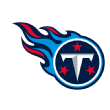
Tennessee Titans: Defensive line
How can a position be the biggest remaining need when a team spends its first-round pick there and signs a veteran at the position as well? Simple: When that first-round pick is coming off a torn ACL in February, and the team was exceptionally thin at the position prior to free agency. Free-agent signee Brent Urban will help the Titans until Jeffery Simmons is ready, but Tennessee regularly dressed five defensive linemen last year and now has only four players of significance who are likely to be ready Week 1. Even with good health at the position not exposing their lack of depth in 2018, the Titans ranked fifth worst by adjusted line yards allowed. Any injury could prove devastating and outside linebacker is nearly as thin, so no help would be coming from that quarter.
-- Tom Gower
AFC West
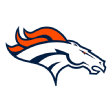
Denver Broncos: Inside linebacker
New head coach Vic Fangio's successful defenses have nearly always relied on a pair of quality inside linebackers -- think Danny Trevathan and Roquan Smith in Chicago, Patrick Willis and NaVorro Bowman in San Francisco, Ray Lewis and Bart Scott in Baltimore or even the vaunted Dome Patrol of the Saints in the 1980s and '90s. Premium talent in the center of the defense is what makes Fangio's style work; it's the foundation around which everything else is built. With that in mind, Denver was often linked to Devin White and Devin Bush in the pre-draft process, as Fangio places his stamp on Denver's D.
Instead, Denver handled other needs: a pass-catching tight end in Noah Fant, vital interior offensive line help in Dalton Risner, a potential quarterback of the future in Drew Lock. These are all fine, justifiable picks, but they leave the Broncos likely starting veteran Todd Davis and 2018 fourth-round pick Josey Jewell at inside linebacker. Davis and Jewell don't exactly fit in with the quality of player Fangio has usually employed to run his defenses, and there's little depth behind them.
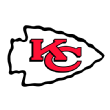
Kansas City Chiefs: Cornerback
Kansas City's new defensive coordinator, Steve Spagnuolo, loves to bring pressure; he runs an aggressive defense that prioritizes getting to the quarterback at the expense of providing help in coverage. This is a dramatic change from Bob Sutton's style, and it may not be one the Chiefs' cornerbacks can handle. Of the Chiefs' projected starters, only Kendall Fuller qualified for our cornerback charting stats a year ago; he finished 63rd out of 83 in success rate. Next to him are the up-and-down Bashaud Breeland and last year's undrafted free-agent find, Charvarius Ward. Not one of them is the sort of player you'd necessarily trust on an island against some of the top receivers in the game.
Kansas City did add South Carolina's Rashad Fenton late in the sixth round; he'll compete in training camp and might be a good candidate for the practice squad. He's not exactly a replacement for the departed Steven Nelson, so the Chiefs will have to count on development from Ward to try to shore up their secondary in 2019.

Los Angeles Chargers: Guard
Two years ago, the Chargers thought they had solved their guard issues, taking Forrest Lamp and Dan Feeney in the second and third rounds in 2017. Neither has worked out; Lamp missed all of 2017 with a torn ACL, played just two games last year, and may be moved to tackle this season. After a promising rookie season, Feeney suffered through a terrible sophomore slump in 2018. Veteran guard Michael Schofield has never lived up to his potential either. Philip Rivers isn't getting any younger and running away from interior pressure isn't great for his longevity.
The Chargers did add some talent to their line, taking Trey Pipkins of Sioux Falls in the third round, but he's a tackle -- a potential replacement for Sam Tevi, not Lamp, Schofield or Feeney. Perhaps Lamp will finally see the field in 2019, or Feeney's pass protection woes will work themselves out as he continues to develop. Either way, the Chargers won't be getting any outside help to shore up their interior line this year.
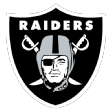
Oakland Raiders: Quarterback
The Raiders used five of their first six picks to bolster their pass defense, which ranked dead last in DVOA a year ago, and used the rest of their selection on skill position players to try to breathe some life into the 25th-ranked offense. We can quibble with the individual selections -- Clelin Ferrell before Josh Allen? A first-round running back? -- but credit where credit is due. Mike Mayock and Jon Gruden at least added someone to nearly every spot on the roster that desperately needed a talent infusion.
They didn't add a quarterback, however, which is a major vote of confidence to Derek Carr -- and perhaps an undeserved one. While we're not saying they should have used the fourth pick on a Carr replacement, Carr has never finished in the top 15 in QBR and only once cracked the top 10 in DVOA. He has consistently been one of the most conservative passers in the league, finishing near the bottom in ALEX and air yards. The Raiders are hoping adding Antonio Brown and bringing in a bunch of young skill position players will give Carr a shot in the arm, but if it does not, they're stuck with Mike Glennon and Nathan Peterman behind him. Using an early Day 3 pick on a developmental passer such as Jarrett Stidham or Easton Stick would not have been the worst idea in the world.
-- Bryan Knowles
